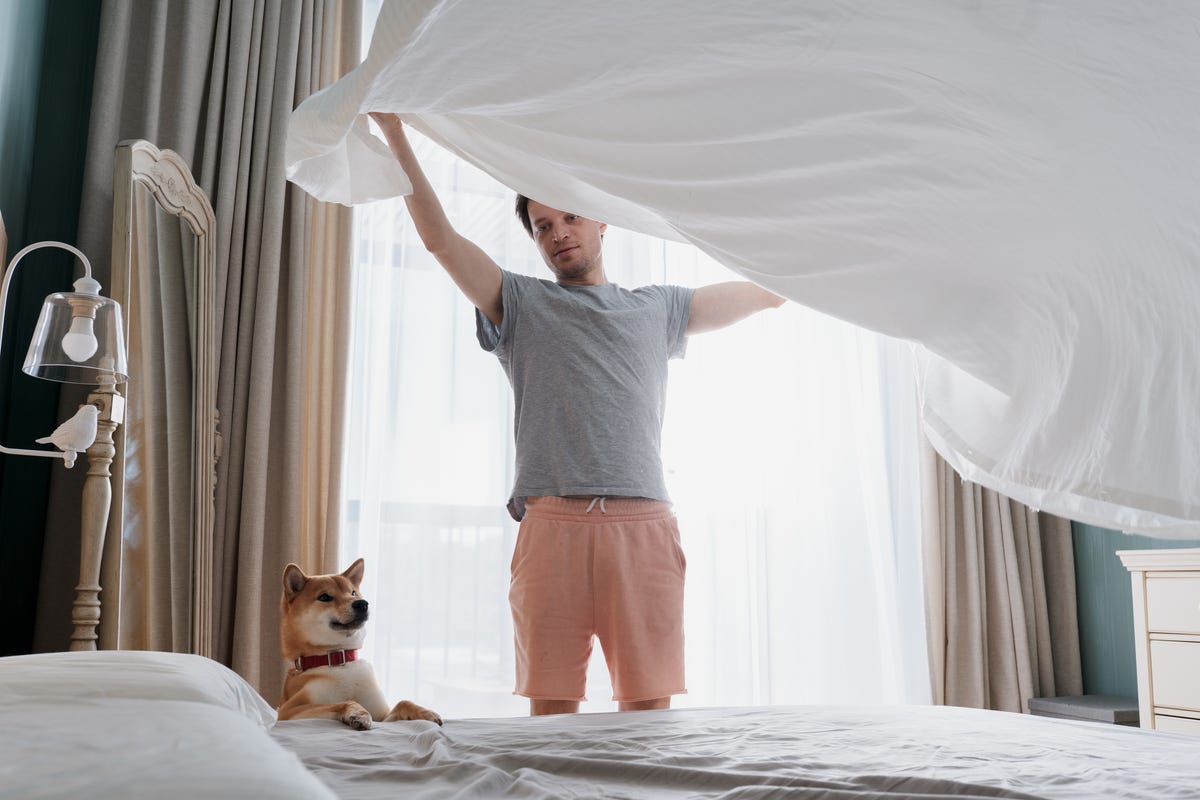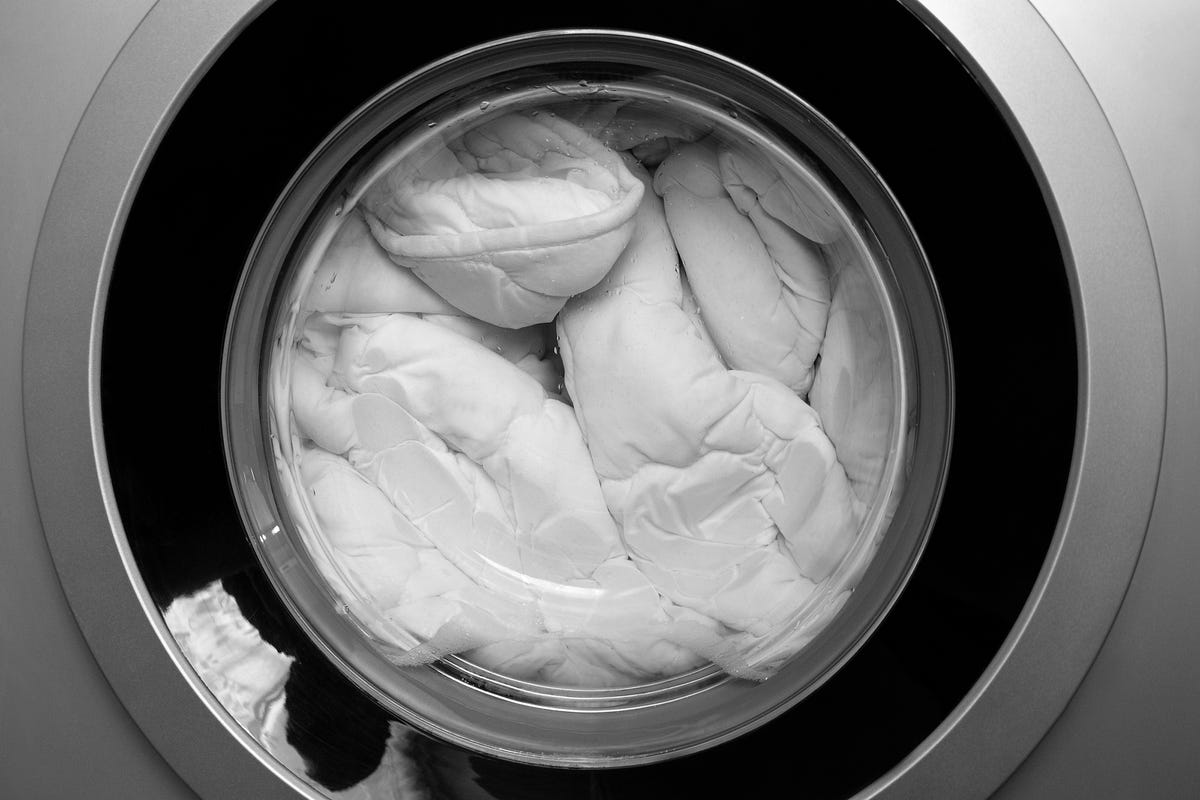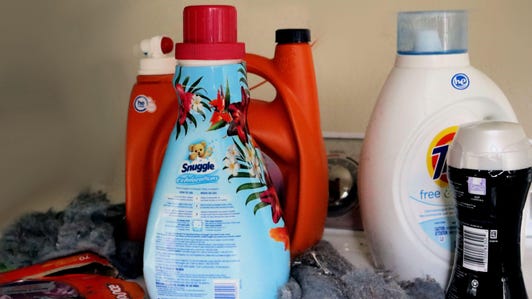Who doesn’t love climbing into their comfy bed after a long, exhausting day? You wiggle down in the soft sheet and snuggle with a nice warm blanket. Maybe you even put on a sleep mask and get ready to take a nap. But, wait. When was the last time you actually washed your bedding? If you can’t remember, that heavenly oasis may quickly feel less blissful. It might even be a little gross.
Bedding, especially sheets, can easily collect dead skin, dust mites and bodily fluids. And that’s not to mention how pillowcases are often soiled with makeup, oils and lotions, along with hair and skin products. With this in mind, you need to make washing the bedding part of your weekly routine. To help get you started, here’s the best way to wash your sheets. (You can also check out our recommendations for the best mattresses and best duvet covers you can buy, and how to wash your pillow without making it lumpy.)

How often should I change or wash my sheets?
The common rule of thumb is washing sheets every other week. Ideally, sleep experts recommend changing sheets every week, but agree that every two weeks is the absolute longest one should go sleeping on the same set of sheets.
Why do we wash our sheets and bedding?
Hygiene is always important — even when it comes to our bedding. If you can’t see stains or smell any odor, it doesn’t mean your sheets are clean. Sheets can accumulate dead skin, mites, animal dander, pollen, makeup, bodily secretions and more grim, which may cause discomfort or skin rashes.
One of the biggest reasons to regularly clean sheets is due to sweat. In a May study, 41% of participants reported experiencing night sweats in a month, and generally, people tend to run hot when covered in blankets or living in warmer climates. Sweat can soak into the sheets which can clog up the fibers and make the sheets smell.


You should wash your sheets more often if you have a habit of sleeping with your pet.
Elena Grigorovich / EyeEm/Getty Images
You should also wash your sheets more often if:
- You have allergies or asthma
- You have sensitive skin
- You sweat or overheat frequently
- You sleep naked
- You sleep with a pet
- You eat in bed
- You get in bed before showing
- You lay in bed wearing clothes you wore out in public
- You have an infection or open wound that touches the bedding


What’s the best way to machine-wash my sheets?
Most bedsheets are machine-washable and aren’t much of a hassle to clean. Cotton and linen bedsheets are especially easy, while silk and satin are a bit more temperamental, requiring cold temperatures and slow spin cycles. It’s best to always check the care tag on your sheets, but this is the best method to machine-wash the majority of sheet sets:
- Don’t overwhelm the machine
It can be tempting to just throw every pillowcase, fitted sheet and comforter right into the machine, but throwing everything in at once may be too much and you may not get a good clean. I recommend washing the fitted and flat sheets together with your pillowcases, and then washing any heavier comforter, quilt or throw blanket separately.
And definitely don’t throw in any clothing or towels in with your bedding because it could leach color or have buttons and zippers that will damage delicate sheets.


Bulkier items like duvet covers should be washed alone.
iso_petrov/Getty Images
2. Check bedsheets for stains
Stains are better taken care of pre-wash, so take a few minutes to examine your sheets or pillowcases for stubborn blemishes. You can use a gentle dish soap and water, or baking soda and water mixture to let sit for a few minutes if you spot a dark mark or makeup stain.
3. Measure out detergent
Less is usually more when it comes to using detergent. Too much detergent can lead to the machine using excess water or cause build-up in the washing machine’s pipes. Most detergents are acceptable to use on cotton and linen sheets, but choose a detergent for delicate fabrics to wash silk and satin sheets. There are many silk or satin-friendly detergents on the market.
A good rule of thumb is to use 2 ounces (1/4 cup) or half a cap full of liquid laundry detergent for a regular sized load of bedding. You can also use 4 ounces (1/2 cup) or 1 full cap of liquid laundry detergent for a larger load of bulkier items.
I also recommend skipping the fabric softener since it can weaken the fabric.
4. Adjust the settings
I always recommend checking the care label for the ideal washing temperature since some fabrics can shrink in the wash. It’s best to use the hottest temperature the sheets can tolerate since hot water most effectively kills germs and bacteria. Colder cycles may not fully get rid of the grime.
Polyester blends are best in warm water, while cotton can tolerate hot water. Silk and satin sheets should be washed on a cold, gentle cycle.
13 laundry organization tips you need to try






+12 more
5. Dry completely
For most sheets, you can use the dryer on a low to medium heat. Satin and silk sheets would do best to air dry since they can be easily damaged even on a low-heat dryer cycle.
You can also throw in a few dryer balls with your bedding since they allow gaps, helping the bulkier sheets to dry more quickly and evenly (I always hate when I think I’m finally ready to make my bed and I realize one whole section is still damp from being bundled up).
You can avoid cleaning your bedsheets as often by making it a habit to not eat in bed, not sleeping with your pet and only cuddling down in the sheets after a shower. While it may seem like a hassle to strip your bed every week, it’s well worth the extra effort, so you can sleep and relax a little easier.
For more hacks, check out how to remove makeup stains from bedding and our sleep experts’ favorite bed material.
More cleaning and laundry tips
- Turns Out There Is a Wrong Way to Do Laundry, and It’s Costing You Cash
- Laundry Hacks That Will Change the Way You Wash Your Clothes
- Why It May Be Time to Ditch Your Favorite Laundry Products
- The Best Way to Wash Your Dirty Pillow, Without Making it Lumpy
- How to Clean Your Running and Workout Shoes
- How to Clean Gym Clothes the Right Way Without Losing Elasticity or Wicking
The information contained in this article is for educational and informational purposes only and is not intended as health or medical advice. Always consult a physician or other qualified health provider regarding any questions you may have about a medical condition or health objectives.
Mattress Buying Guides
Type
- Best Mattress
- Best Air Mattress
- Best Adjustable Mattress
- Best Mattress in a Box
- Best Memory Foam Mattress
People
- Best Mattress for Side Sleepers
- Best Mattress for Stomach Sleepers
- Best Mattress for Back Pain
- Best Mattress for Heavy People
- Best Mattress for Kids
Preference
Mattress Reviews
- Purple Mattress
- Dreamcloud Mattress
- Nectar Mattress
- Casper Mattress
- TempurPedic Mattress
- Saatva Mattress
- Tuft & Needle Mattress
- Helix Mattress
- Avocado Mattress
Other Sleep Guides
Bed Accessories
- Best Pillow
- Best Weighted Blanket
- Best Sleep Mask
- Best Sheets
- Best Mattress Toppers
- Best Mattress Pads
Sleep Tech




